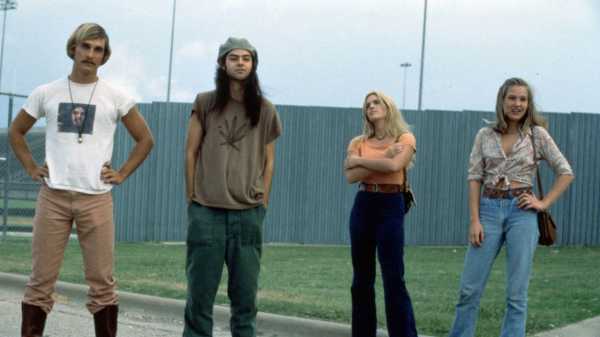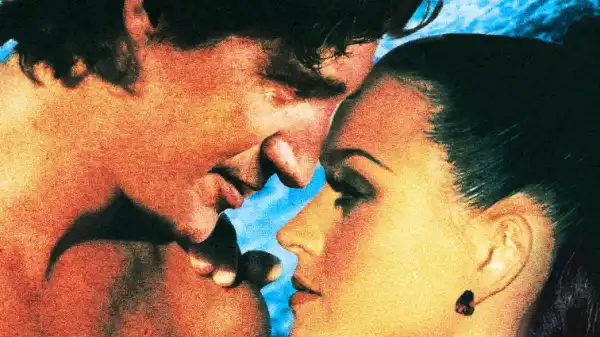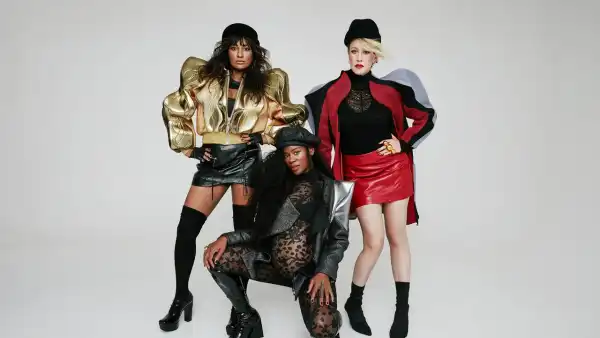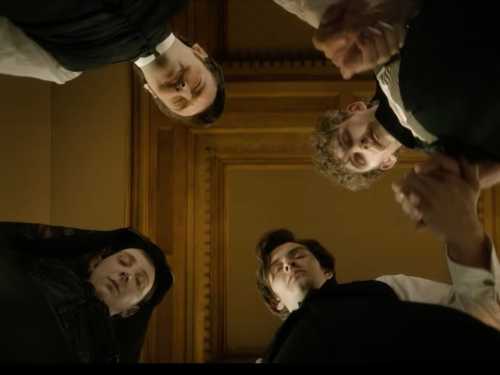
It has long been fashionable to hate baby boomers, “America’s noisiest if no longer largest living generation,” as the Times critic Alexandra Jacobs wrote recently. But I remain on the fence. I believe that you can appreciate the late David Crosby’s music, for instance, while not endorsing buckskin jackets, walrus mustaches, and lyrics that address women as “milady.”
What I most resent about baby boomers is that, technically, I am one. The baby boom is most often defined as encompassing everyone born from 1946 to 1964, but those nineteen years make for an awfully wide and experientially diverse cohort. I was born in 1958, three years past the generational midpoint of 1955. I graduated from high school in 1976, which means I came of age in a very different world from the earliest boomers, most of whom graduated in 1964. When the first boomers were toddlers, TV was a novelty. We, the late boomers, were weaned on “Captain Kangaroo” and “Romper Room.” They were old enough to freak out over the Sputnik; we were young enough to grow bored of moon landings. The soundtrack of their senior year in high school was the early Beatles and Motown; ours was “Frampton Comes Alive!” Rather than Freedom Summer, peace marches, and Woodstock, we second-half baby boomers enjoyed an adolescence of inflation, gas lines, and Jimmy Carter’s “malaise” speech. We grew up to the background noise of the previous decade, when being young was allegedly more thrilling in every way: the music, the drugs, the clothes, the sense of discovery and the possibility of change, the sense that being young mattered.
The idea of generations with well-defined beginnings and endings, like Presidential terms or seasons of “American Horror Story,” is inherently silly, of course. Generations are more like sequential schmears, overlapping and messy, and the idea that each one shares essential traits is perhaps a marketer’s version of astrology. Still, these divisions would be slightly less dubious if crafted more artfully, and, with that in mind, I have a proposal: let’s split the baby boom in half and dub those of us born between 1956 and 1964 the “Dazed and Confused” generation, after Richard Linklater’s quasi-autobiographical teen movie, which is coming up on its thirtieth anniversary. (The Criterion Collection just released a restored 4K edition, marking the occasion.)
Teen movies, especially those made using a rearview mirror, have become essential to generational mythology. I can’t speak for how accurately George Lucas’s “American Graffiti” captured what it was like to be a teen-ager in the early sixties, nor can I fairly assess the portrait of an early-two-thousands high-school experience provided by Greta Gerwig’s “Lady Bird.” But I can vouch for “Dazed and Confused,” which not only nails the clothes, hair, music, and cars of the period but also the laissez-faire vibe—the way parents and other authority figures, who had divorce and EST to deal with, seemed checked out, and kids were left to stumble through adolescence on their own.
Linklater’s film takes place in 1976, on the last day of school in a small town in Texas. The narrative, such as it is, follows a couple dozen characters, rising seniors plus a few freshmen, through the afternoon and into the night. After some frosh hazing, the kids drive around, get high, look for something to do, hang out at a rec center, and eventually coalesce at a kegger out in the woods by an old light tower. Best embodying the mellow party-hearty ethos is the character played by Matthew McConaughey: Wooderson, a genial, if creepy, older guy with a loaded Chevelle, a Ted Nugent tee, and too-carefully coiffed hair. Treading water in life, he is happy to share his weed, beer, and philosophy with teen-agers. (“You just gotta keep livin’, man. L-i-v-i-n.”) As Anthony Lane put it, in his review for The New Yorker, the film has “scarcely any plot and no perceptible moral, apart from the injunction to ‘Eat More Pussy’ scrawled on a high-school wall.”
There’s a scene in the movie that perfectly captures my point about the generational divide. “It’s like the every-other-decade theory,” one of the film’s more thoughtful young characters says, during an evening spent not analyzing a new Bob Dylan album or plotting to levitate the Pentagon but mostly doing nothing. “The fifties were boring,” she says. “The sixties rocked, and the seventies—oh, my God, well, they obviously suck. Maybe the eighties will be radical.” That last line got a big laugh when the movie came out, in 1993. Maybe it still does. But the eighties are Gen X’s problem. For us second-half boomers, it often felt as if we had been seated at a restaurant that was fresh out of the menu’s best dishes. I’m not saying that we had it worse, exactly. I’m grateful that I never had to worry about the draft and that I came of age after Roe v. Wade was decided (and before it was repealed). I realize that I could have been listening to Stevie Wonder and Joni Mitchell instead of Peter Frampton. The point is—we had it different.
And, as it happens, Richard Linklater agrees with me—at least about the idea of shaving off a new generation, if not necessarily my chosen label for it. “I was born in ’60, graduated in 1979, so I never felt like much of a boomer,” he told me. “I feel a little offended being lumped in with someone who’s born in 1946. I’m, like, Wow, we grew up in a whole different world. What are you talking about?”
These days, boomer resentment is usually credited to Gen X-ers and millennials, but the ones who had to put up with older boomers first were their younger siblings—a burden that Linklater well remembers. “Weren’t you sick of hearing people that were college-age or whatever in the late sixties talking about how great it was?” he said. “It was, like, ‘O.K., you guys, no matter what you do, you’ll never top what we did’—you know, Woodstock and all that shit. So I was, like, ‘Yeah, guess what? We don’t need to self-mythologize. We don’t even want to.’ ”
“Dazed and Confused” underscores this idea in a short scene in which a high-school social-studies teacher boasts that “the ’68 Democratic Convention in Chicago is probably the most bitchin’ time” she ever had, while her students struggle to stay awake. I remember a sixth-grade teacher bragging about having been at the March on Washington and getting to hear Martin Luther King, Jr., deliver the “I Have a Dream” speech, in person. Our generation naturally had no equivalent watershed events, no epochal gatherings worth lying about having attended. Linklater and I reminisced about what a corny, cynical dud the Bicentennial had been. “The Comet Kohoutek of holidays,” he called it, referencing yet another seventies disappointment.
Linklater cautioned that he hadn’t intended to lard “Dazed and Confused” with generational freight the way Lucas, for one, clearly meant to do with “American Graffiti,” arguably the quintessential baby-boomer teen movie (though its characters, like Lucas, who was born in 1944, are only on the cusp of boomerhood). Linklater’s film echoes, and even seems to comment on, Lucas’s in key ways: both follow large groups of teen-agers meandering their way through a single evening and into the morning. In “American Graffiti,” it’s not the first night of summer but the last. The setting is Modesto, the small city in California’s Central Valley where Lucas grew up, and the year is 1962, when Lucas graduated high school. Two characters, played by Ron Howard and Richard Dreyfuss, face a decision: Will they leave the next day for college back East or chicken out and stay home? In Linklater’s film, the stakes are suitably lower: Will Randall (Pink) Floyd, the stoner quarterback played by Jason London, sign a pledge not to do drugs, as his hard-ass football coach demands? The pledge is more or less a formality; actual abstention doesn’t seem to be on the table for the quarterback or anyone else on the team. In the end, he tells the coach to stick it, and the movie’s final scene has Pink, Wooderson, and a few other friends driving off into the morning sun to buy Aerosmith tickets.
Linklater told me that he had “American Graffiti” in mind only in the way that anyone making a teen movie in its wake would. “It’s kind of the air you’re breathing,” he said. “I love ‘American Graffiti,’ but I didn’t have any big statements I felt comfortable making like the way that movie does.” He mentioned its famous where-are-they-now ending, in which a title card explains that one character went missing in action in Vietnam, another was killed by a drunk driver, and a third ended up as “a writer living in Canada,” having presumably dodged the draft. That’s the moment when “American Graffiti” becomes the story of a generation and not just of some goofy, restless teen-agers in Modesto. (Telling, too, is the fact that Lucas gave updates only for his male characters.)
“That movie says so much,” Linklater continued. “It’s very poignant. It’s a perfect movie in a lot of ways. I just felt that for anything near what I considered my generation, we didn’t want generational statements so much. That’d be reason to roll our eyes. So it just never felt appropriate to say anything other than what it felt like to just be alive experientially, you know, moment to moment. That’s all I was going for.” To that end, he added, “I purposely made the cast of my movie juniors—they don’t have any big questions that night, because they’re coming back for senior year. I purposefully did that to lower the stakes. They just want to have fun and do their thing.”
Linklater mentioned two other favorite teen movies of his: “If. . . . ,” from 1968, and “Over the Edge,” from 1979. Both films climax with kids waging violent insurrections and destroying their schools. “That’s pretty great and cathartic,” he said. “But my whole point was, like, nothing happens in my movie. That’s the difference between the generations. The other generation felt very comfortable making these big statements. They had bigger stakes, bigger things going on—I would say a war in Vietnam’s a pretty good one—where we didn’t have that. Going to get Aerosmith tickets—that felt pitched about right for people of our generation.” In an appropriately low-key way, Linklater’s ending has resonated over the years. The single-season TV series “Freaks and Geeks,” created by Paul Feig (b. 1962) and produced by Judd Apatow (b. 1967) and featuring teens in suburban Detroit during the 1980-81 school year—the older characters are on the tail end of the “Dazed and Confused” generation—strikes a similar “fuck it” chord in its finale, with its heroine blowing off an academic conference and getting on a bus to go see the Grateful Dead in Colorado.
“Dazed and Confused” was a disappointment at the box office but found its audience on home video; a soundtrack CD, boasting bands such as Foghat and Deep Purple that had largely fallen off the cultural radar in the early nineties, went platinum. Linklater confessed surprise at the unironic affection with which younger audiences embraced the movie and its trappings. “You know the way ‘Graffiti’ did kick off a nostalgia for the fifties?” he said. “I was thinking, O.K., there’s no way this film will ever kick off a nostalgia for the seventies. I’m going to make a film to show how the seventies kind of sucked, believe it or not, how kind of repetitious and boring all of it was—even though I guess I made it look too fun.” He laughed. “It was funny to realize, Oh, shit, people like this!” If that’s a sentiment any genuine honest-to-God baby boomers ever uttered about their own younger days, let me know. ♦
Sourse: newyorker.com






